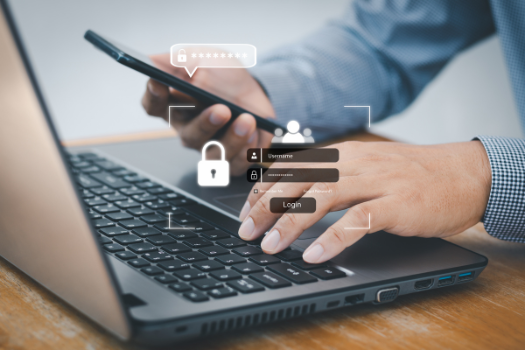.png)
Cyber Security in BIM: Protecting Digital Building Data
Introduction: Why Cyber Security in BIM is Crucial
Building Information Modeling (BIM) has transformed the construction industry. It simplifies planning, designing, and managing construction projects. BIM relies heavily on digital data, making workflows faster and more efficient. However, this reliance on centralized data also creates risks.
When all project information is stored digitally, it becomes a target for cyber threats. Hackers can access sensitive data, disrupt workflows, and even delay project completion. Without proper cybersecurity measures, companies risk financial loss and damaged reputations.
Cybersecurity in BIM is no longer optional; it’s essential. Protecting digital building data ensures smooth operations and safe collaborations. This blog will provide actionable tips to safeguard your BIM data from threats. By implementing these strategies, you can secure your projects and stay ahead of potential risks.
Understanding Cyber Threats in BIM
BIM workflows rely on sharing digital data across teams. This makes them vulnerable to several cyber threats. Data breaches are a common risk, exposing sensitive project details like blueprints and financial records. Ransomware attacks can lock teams out of critical files until a ransom is paid. Phishing attempts, where hackers trick users into sharing passwords, are another frequent danger.

Insider threats also pose risks. Sometimes, unauthorized actions by employees or partners can compromise BIM data. Unsecured cloud storage is a major vulnerability. Without encryption, hackers can easily intercept data. Poor user access management, like sharing passwords or granting unnecessary permissions, increases these risks.
Outdated software is another problem. It often lacks security patches, creating gaps hackers can exploit. These threats impact architects, engineers, and contractors. They disrupt workflows, delay projects, and create financial losses. Recognizing these vulnerabilities is the first step to protecting BIM data.
Importance of BIM Data Protection Strategies
BIM data is the backbone of construction projects. Protecting this data is crucial to maintain project integrity and safeguard intellectual property. Robust data protection strategies ensure that sensitive designs, financial records, and project details remain secure.

Without proper security measures, companies face serious risks. Financial losses from data breaches can be devastating. Reputational damage can harm client trust and lead to lost opportunities. Operational risks, such as delays caused by cyberattacks, disrupt workflows and increase costs.
Legal compliance is another key factor. Regulations require companies to protect digital building data. Failing to meet these standards can result in fines and penalties. Proactive data protection strategies are essential. These include encrypting data, limiting user access, and using secure storage solutions.
By taking these steps, companies can minimize risks and ensure that their projects stay on track. Protecting BIM data is not just about avoiding problems—it’s about building a secure foundation for success.
Key Strategies for Cyber Security in BIM
Securing BIM data requires practical steps. These strategies protect your projects and reduce risks from cyber threats.
Access Control and User Authentication: Start by limiting who can access BIM data. Role-based access control (RBAC) ensures users only see what’s relevant to their role. Two-factor authentication adds another layer of security, requiring users to verify their identity with a code or app. These measures prevent unauthorized access.

Data Encryption: Encrypting BIM data is crucial. It secures information during transfers and while stored. Encrypted data is unreadable to hackers, even if intercepted. This step is vital for protecting sensitive project details.
Regular Cybersecurity Training: Employees are often the first line of defense. Regular training helps them recognize phishing emails and other threats. Teach your team how to create strong passwords and spot suspicious activity. Informed employees make fewer mistakes, reducing risks.
Backup and Recovery Plans: Data loss can happen even with the best security. Regular backups ensure you can restore critical files quickly. Disaster recovery plans help maintain business continuity during an attack. Test these plans regularly to make sure they work when needed.

Continuous Monitoring: Real-time monitoring tools detect unusual activity, like unauthorized logins or data transfers. These tools alert teams to potential threats, allowing quick responses. Continuous monitoring helps prevent small issues from becoming major breaches.
By implementing these strategies, you create a strong defense for your BIM projects. Cybersecurity is not just about technology—it’s about building a culture of safety.
Regulatory Compliance and Industry Standards
Cybersecurity in construction isn’t just about preventing threats—it’s also about meeting regulations. Standards like ISO 19650 focus on managing BIM data securely. Laws such as GDPR and CCPA protect personal and project-related data. These rules ensure companies handle sensitive information responsibly.
Compliance provides more than legal protection. It builds trust among project stakeholders. When clients know their data is secure, they feel confident partnering with your company. Meeting industry standards shows your commitment to maintaining high security and ethical practices.
To stay compliant, adopt best practices in your BIM workflows. Use secure storage, limit data access, and encrypt sensitive information. Regular audits can also ensure your processes meet regulatory standards. By aligning with these requirements, you protect your business and foster stronger partnerships.
Challenges and Future Trends in BIM Cybersecurity
BIM cybersecurity faces significant challenges. Rapid technological advancements often outpace security measures. New tools and platforms can create vulnerabilities if not properly protected. Another hurdle is the lack of standardized cybersecurity protocols across the construction industry. With so many stakeholders involved, managing data in collaborative environments becomes complex and risky.

Emerging trends are paving the way for stronger security. AI-driven threat detection is gaining traction, helping to identify and respond to potential breaches in real-time. Blockchain technology offers a secure way to share digital building data, ensuring tamper-proof transactions. Additionally, integrating cybersecurity into digital twin frameworks enhances protection by monitoring virtual models for vulnerabilities.
While challenges remain, these innovations are shaping a safer future for BIM. Staying updated on these trends will help companies strengthen their cybersecurity strategies and protect their projects effectively.
Conclusion: Strengthening BIM’s Digital Foundation
Cybersecurity is essential for protecting construction data and ensuring project success. From managing cyber threats to adopting data protection strategies, securing BIM workflows safeguards sensitive information and builds trust among stakeholders. Compliance with regulations and leveraging emerging technologies like AI and blockchain further strengthen BIM security.
A secure BIM environment is the foundation for successful, resilient projects. Prioritize cybersecurity as a key part of your BIM strategy. By taking action now, you can protect your data, ensure smooth operations, and stay ahead of evolving threats.